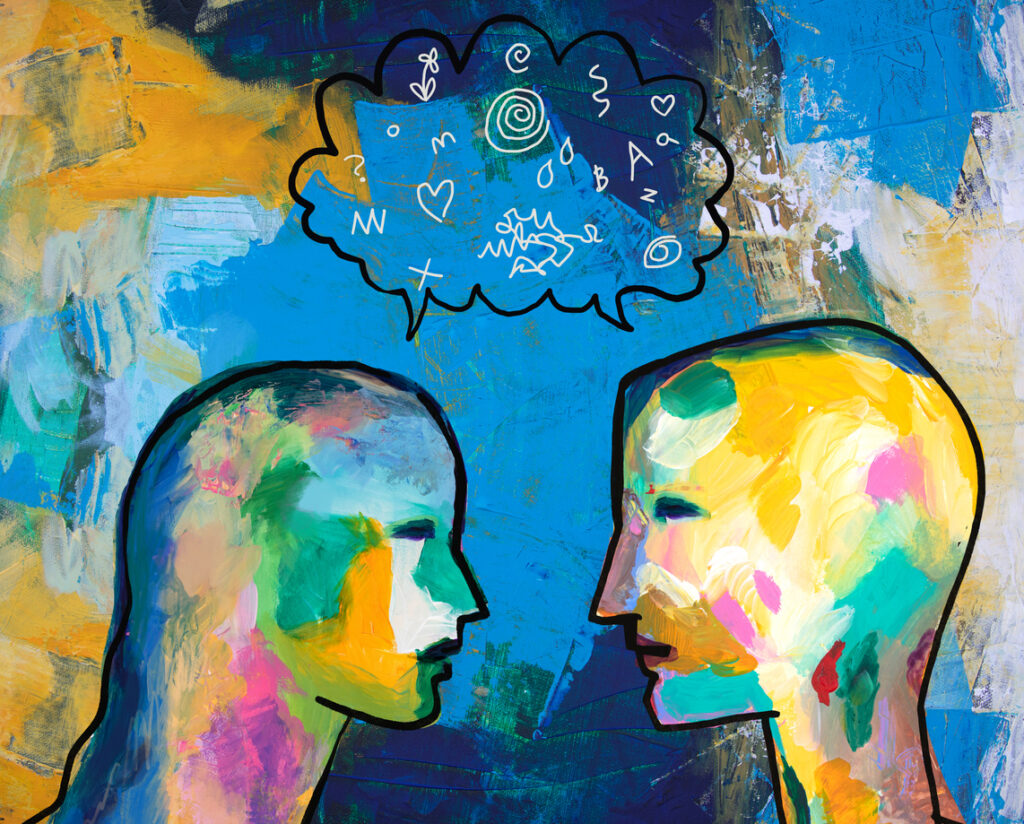Despite the many strides made towards greater diversity and inclusion in the workplace in recent decades, a recent CIPD report found that one in three UK employees felt they had experienced bias in the workplace due to their gender, age, race, or disability. How can we still be in this place when there has been so much focus on DEI?
Evidently this is a persistent issue, so perhaps it’s time for all of us to analyse our understanding of inclusion, particularly in light of the ‘paradox of tolerance’.
The paradox presents a conundrum: to what extent should intolerant views be tolerated, especially when they impede on another’s identity or lived experience? On the surface, fostering an environment that respects free speech seems straightforward, but the waters muddy when words morph into weapons against someone’s identity.
The modern corporate workspace isn’t just a place to ‘work’; it’s an ecosystem, an environment where positive people experiences are paramount – so what do we do about it?
The issue of psychological safety
Debating the boundaries of free speech is more than an exercise in philosophy; it’s about ensuring psychological safety.
When individuals feel that their identity is under attack or when there’s a constant need to defend their lived experiences, it creates an environment of defensiveness and stress.
Without clear guidelines, ambiguity can lead to unintentional harm or misuse of ‘free speech’.
Notably, Google’s two-year study on team performance found that psychological safety was the top factor driving high-performing teams.
How would you feel knowing your colleague held views that were counter to your identity or your own ethnicity, and having to work with them each day?
Key challenges of balancing free speech and inclusion:
- Distinguishing critique from harm: Constructive critique of ideas is healthy, but when it veers into the personal territory of someone’s identity, it becomes detrimental. Where should organisations draw the line?
- Managing diverse viewpoints: Diversity isn’t just about demographics. With varied backgrounds come varied perspectives, some of which may clash. How can organisations handle such diversity of thought without alienating or marginalising voices?
- Platforming vs. silencing: The right to hold an opinion is different from the right to have it amplified or weaponised. In workplaces, how should organisations decide which voices to uplift and which to challenge or even silence?
Three key priorities for redressing the balance:
- Explicit communication: Be clear about what constitutes acceptable language. Define it, communicate it, and, most importantly, model it. Without clear guidelines, ambiguity can lead to unintentional harm or misuse of ‘free speech’.
- Foster a culture of feedback: Encourage a workplace where peers and subordinates can call out intolerable views without fear of reprisal. This requires both courage and vulnerability – but it’s a journey worth taking.
- Invest in continuous learning: The dynamics of inclusion evolve. Continuous training, especially in unconscious bias, can help teams navigate the ever-shifting landscape of what it means to be inclusive.
How do we ensure that our unwavering commitment to free speech doesn’t inadvertently shield or justify intolerance?
Valuing all voices
Our challenge, as forward-thinking organisations, is clear and compelling: We are navigating the delicate interplay between the cherished principle of free speech and the vital imperative of fostering a genuinely inclusive environment.
The question then arises: How do we ensure that our unwavering commitment to free speech doesn’t inadvertently shield or justify intolerance?
We must evolve our perceptions. Rather than viewing free speech and inclusion as competing values, we must recognise them as mutually reinforcing ideals. The power of free speech lies in its ability to enlighten, inspire, and bring about change through the sharing of diverse perspectives.
In truly inclusive environments, every voice – irrespective of its origin – must be valued, not merely for the sake of representation, but for the richness it brings to the collective dialogue and expanding our thinking.
A deeper cultural shift
Moving beyond mere tolerance requires a deeper shift: an organisational culture rooted in empathy, continuous education, and active engagement.
By fostering spaces where employees are not only encouraged to share their stories but are also actively listened to, we can bridge gaps of understanding. Encouragingly, as we actively listen and learn from one another, the unfamiliar becomes familiar, and acceptance naturally follows.
The solution lies not in limiting voices but in amplifying the right ones; not in stifling dialogue, but in enriching it.
Organisations have to lead by example. This means not just establishing guidelines, but also proactively celebrating diversity and weaving inclusive narratives into the very fabric of corporate ethos.
As these narratives become mainstream, they will not only shape the internal culture but also influence broader societal perceptions.
Amplifying voices
For me, the solution lies not in limiting voices but in amplifying the right ones; not in stifling dialogue, but in enriching it. As we make this concerted effort, we will find that the path from tolerance to acceptance is paved with the shared stories, mutual respect, and collective aspirations of every member of our diverse workforce.
The future is not just about coexistence, it’s also about thriving together in harmony. I hope we can move to celebrating and embracing the richness of lived experience among our colleagues, where people are celebrated for who they are.
So, in conclusion, I’ll leave you with a question: Is it enough to simply ‘include’, or must we actively redefine what it means to ‘belong’?
If you enjoyed this, read: Why there’s no such thing as being ‘too woke’.
Despite the many strides made towards greater diversity and inclusion in the workplace in recent decades, a recent CIPD report found that one in three UK employees felt they had experienced bias in the workplace due to their gender, age, race, or disability. How can we still be in this place when there has been so much focus on DEI?
Evidently this is a persistent issue, so perhaps it’s time for all of us to analyse our understanding of inclusion, particularly in light of the 'paradox of tolerance'.
The paradox presents a conundrum: to what extent should intolerant views be tolerated, especially when they impede on another’s identity or lived experience? On the surface, fostering an environment that respects free speech seems straightforward, but the waters muddy when words morph into weapons against someone's identity.
The modern corporate workspace isn’t just a place to 'work'; it's an ecosystem, an environment where positive people experiences are paramount - so what do we do about it?
The issue of psychological safety
Debating the boundaries of free speech is more than an exercise in philosophy; it's about ensuring psychological safety.
When individuals feel that their identity is under attack or when there's a constant need to defend their lived experiences, it creates an environment of defensiveness and stress.
Without clear guidelines, ambiguity can lead to unintentional harm or misuse of 'free speech'.
Notably, Google's two-year study on team performance found that psychological safety was the top factor driving high-performing teams.
How would you feel knowing your colleague held views that were counter to your identity or your own ethnicity, and having to work with them each day?
Key challenges of balancing free speech and inclusion:
- Distinguishing critique from harm: Constructive critique of ideas is healthy, but when it veers into the personal territory of someone's identity, it becomes detrimental. Where should organisations draw the line?
- Managing diverse viewpoints: Diversity isn’t just about demographics. With varied backgrounds come varied perspectives, some of which may clash. How can organisations handle such diversity of thought without alienating or marginalising voices?
- Platforming vs. silencing: The right to hold an opinion is different from the right to have it amplified or weaponised. In workplaces, how should organisations decide which voices to uplift and which to challenge or even silence?
Three key priorities for redressing the balance:
- Explicit communication: Be clear about what constitutes acceptable language. Define it, communicate it, and, most importantly, model it. Without clear guidelines, ambiguity can lead to unintentional harm or misuse of 'free speech'.
- Foster a culture of feedback: Encourage a workplace where peers and subordinates can call out intolerable views without fear of reprisal. This requires both courage and vulnerability – but it's a journey worth taking.
- Invest in continuous learning: The dynamics of inclusion evolve. Continuous training, especially in unconscious bias, can help teams navigate the ever-shifting landscape of what it means to be inclusive.
How do we ensure that our unwavering commitment to free speech doesn't inadvertently shield or justify intolerance?
Valuing all voices
Our challenge, as forward-thinking organisations, is clear and compelling: We are navigating the delicate interplay between the cherished principle of free speech and the vital imperative of fostering a genuinely inclusive environment.
The question then arises: How do we ensure that our unwavering commitment to free speech doesn't inadvertently shield or justify intolerance?
We must evolve our perceptions. Rather than viewing free speech and inclusion as competing values, we must recognise them as mutually reinforcing ideals. The power of free speech lies in its ability to enlighten, inspire, and bring about change through the sharing of diverse perspectives.
In truly inclusive environments, every voice – irrespective of its origin – must be valued, not merely for the sake of representation, but for the richness it brings to the collective dialogue and expanding our thinking.
A deeper cultural shift
Moving beyond mere tolerance requires a deeper shift: an organisational culture rooted in empathy, continuous education, and active engagement.
By fostering spaces where employees are not only encouraged to share their stories but are also actively listened to, we can bridge gaps of understanding. Encouragingly, as we actively listen and learn from one another, the unfamiliar becomes familiar, and acceptance naturally follows.
The solution lies not in limiting voices but in amplifying the right ones; not in stifling dialogue, but in enriching it.
Organisations have to lead by example. This means not just establishing guidelines, but also proactively celebrating diversity and weaving inclusive narratives into the very fabric of corporate ethos.
As these narratives become mainstream, they will not only shape the internal culture but also influence broader societal perceptions.
Amplifying voices
For me, the solution lies not in limiting voices but in amplifying the right ones; not in stifling dialogue, but in enriching it. As we make this concerted effort, we will find that the path from tolerance to acceptance is paved with the shared stories, mutual respect, and collective aspirations of every member of our diverse workforce.
The future is not just about coexistence, it’s also about thriving together in harmony. I hope we can move to celebrating and embracing the richness of lived experience among our colleagues, where people are celebrated for who they are.
So, in conclusion, I’ll leave you with a question: Is it enough to simply 'include', or must we actively redefine what it means to ‘belong’?
If you enjoyed this, read: Why there's no such thing as being ‘too woke’.







